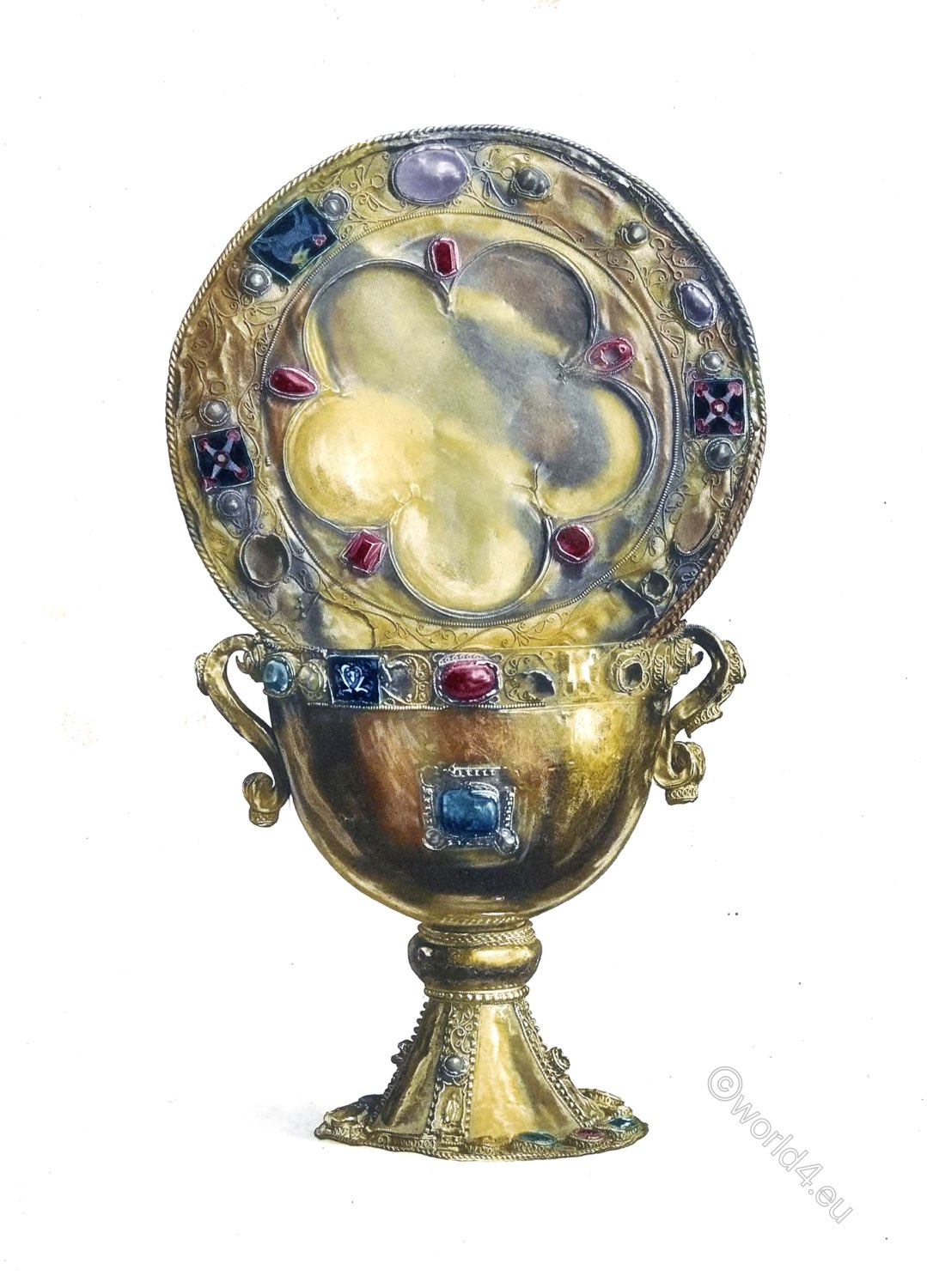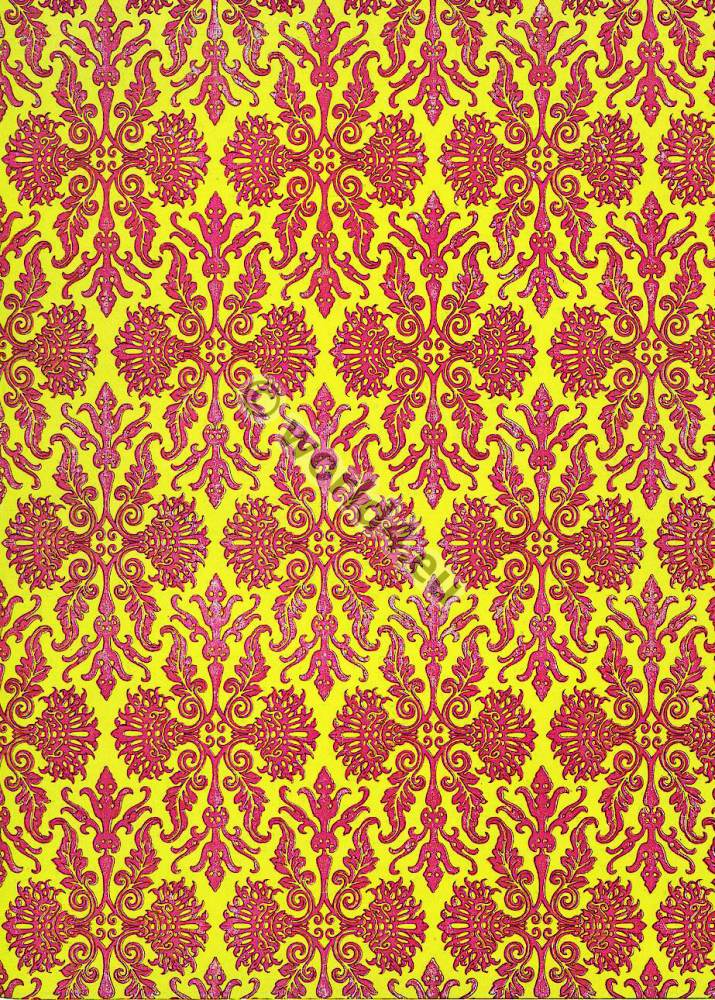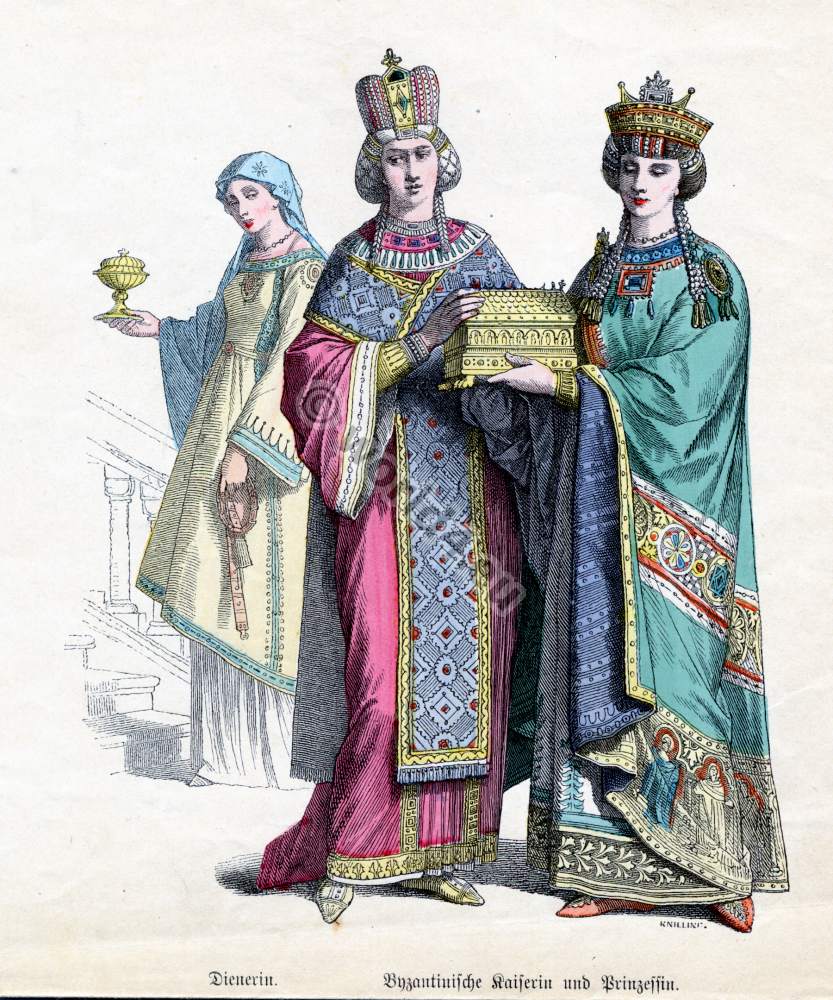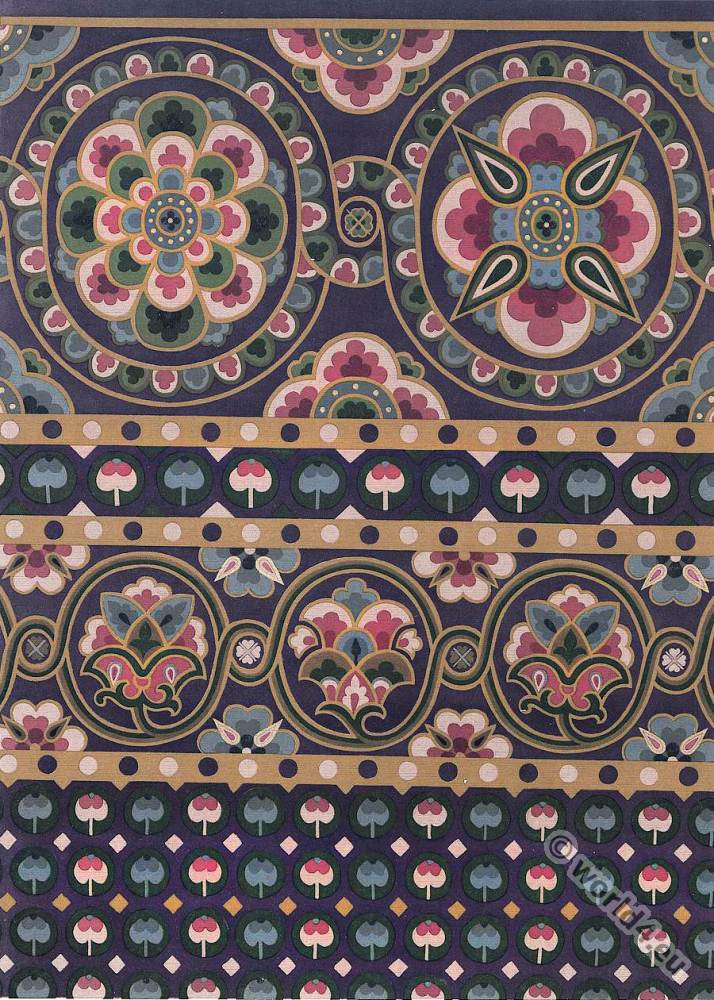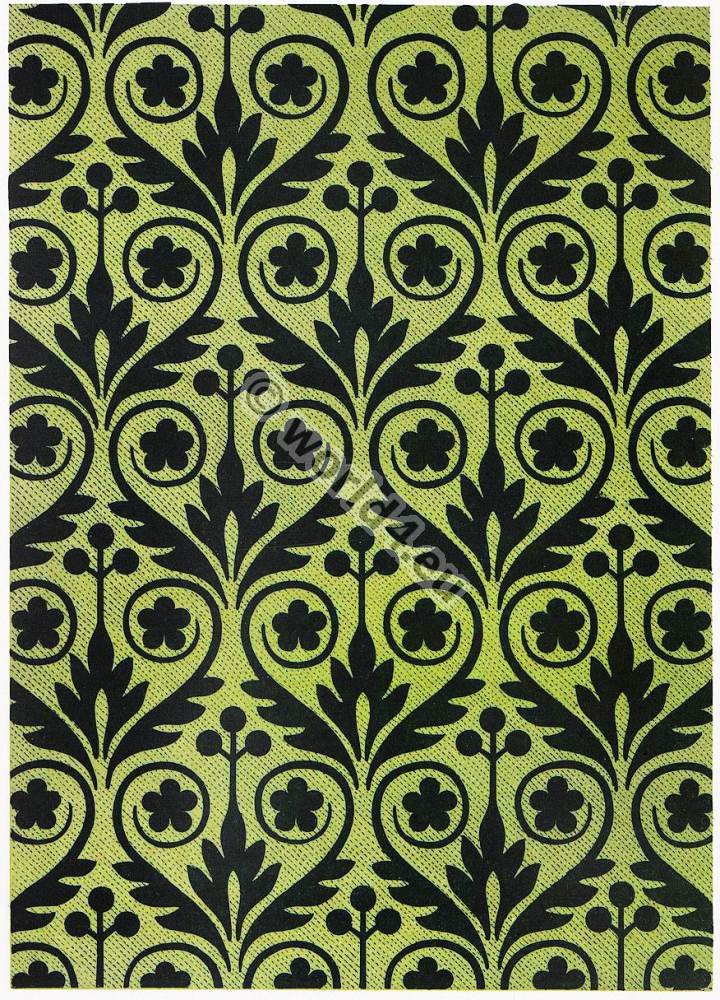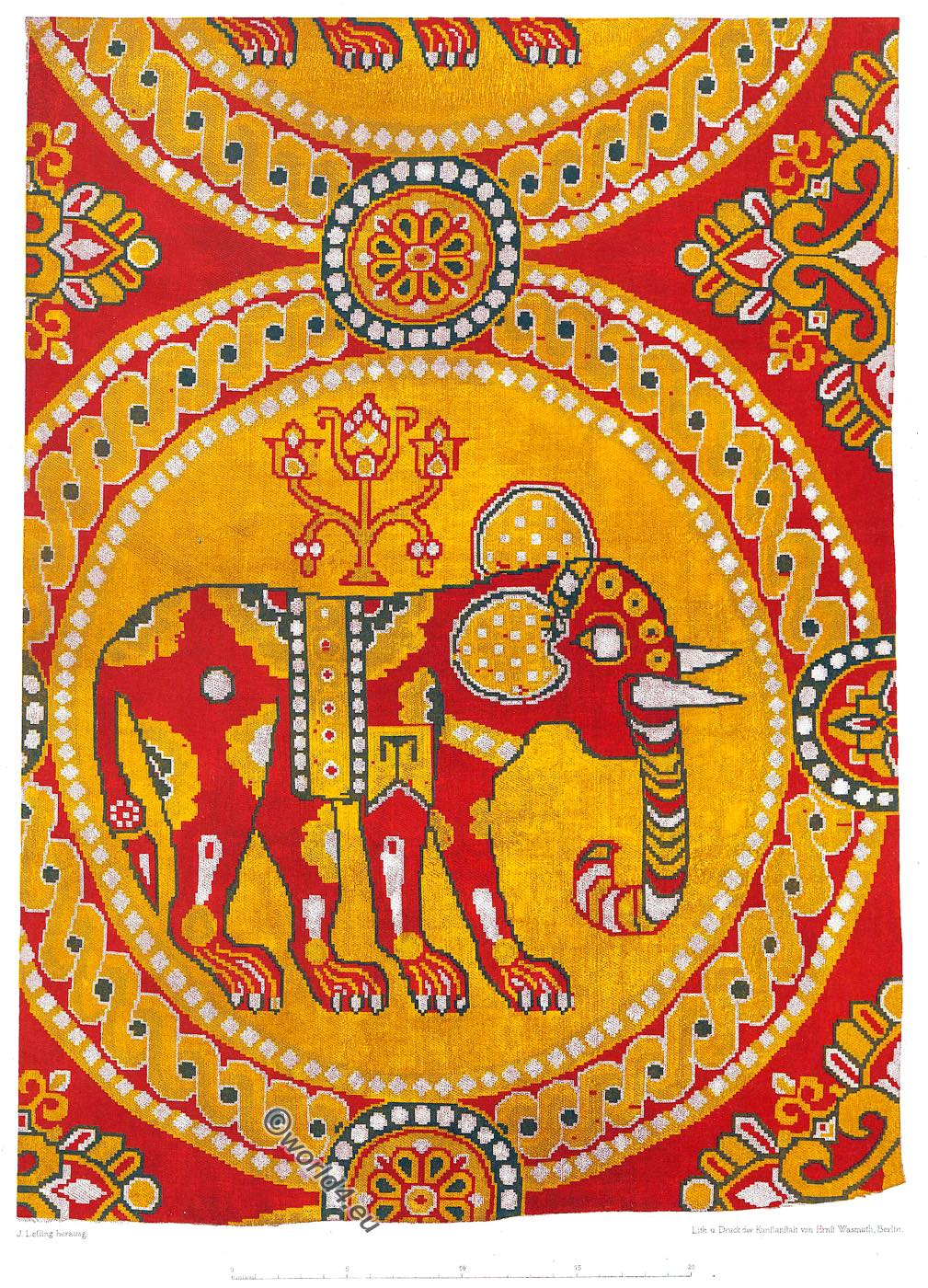
Byzantine silk fabric with elephants.
VIII – X century.
Silk fabric. Background red pattern opposite. Large circles with elephants. The circles are formed by a yellow braided band on a red ground and are connected with each other by rosettes. The ground of the circles is yellow. In each of them an elephant, red with green and white, in black outlines. Narrow saddlecloth. Above the elephant the upper part of the holy tree. In the spandrels between the circles large rosettes.
The pattern, like the closely related fabric in the cathedral of Aachen, is a Byzantine redesign of an originally Sassanid pattern.
The fabric had been found in Spain.
Source: The Tissue Collection of the Royal Arts and Crafts Museum Berlin. Published by Julius Lessing. Published by Ernst Wasmuth. Berlin 1900.
Related
Discover more from World4 Costume Culture History
Subscribe to get the latest posts sent to your email.


